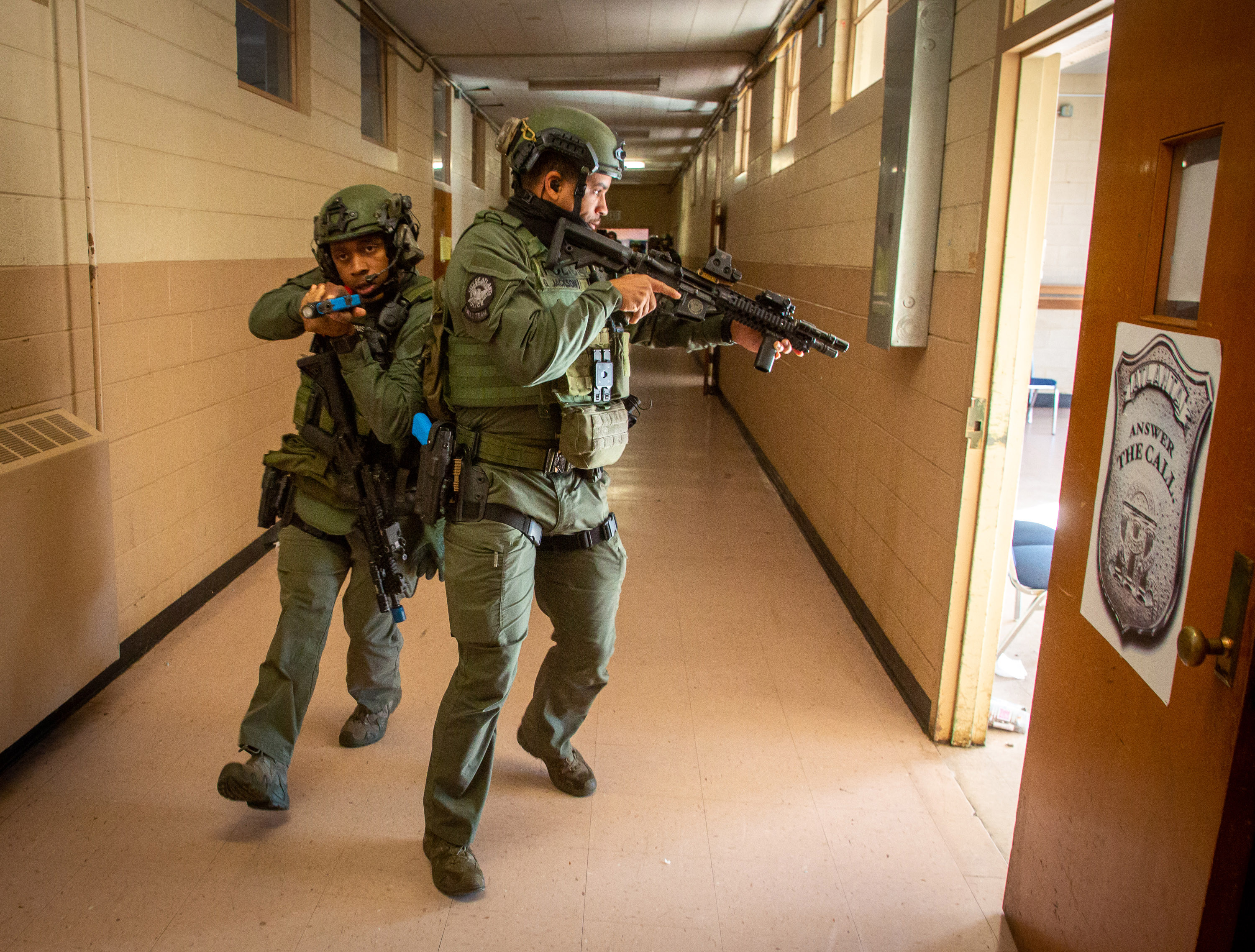Ideal Practices for Carrying Out Active Shooter Training in Your Company
Ideal Practices for Carrying Out Active Shooter Training in Your Company
Blog Article
Executing Energetic Shooter Training: Best Practices for Producing a Safe and Prepared Community Atmosphere
As communities confront the unsettling truth of active shooter occurrences, the application of comprehensive training programs becomes imperative. What are the essential components that can transform a standard training program into a durable model for neighborhood strength?

Recognizing the Requirement for Training
In a period marked by raising occurrences of physical violence in public spaces, recognizing the need for active shooter training has never ever been extra important. The occurrence of mass shootings across numerous environmentsâEUR" such as institutions, work environments, and purchasing centersâEUR" emphasizes the seriousness for people and companies to be prepared for such emergencies. Active shooter situations can unravel swiftly, leaving little time for individuals to react efficiently. Detailed training efforts can outfit participants with the knowledge and skills to respond emphatically.
Additionally, the psychological impact of physical violence on people and neighborhoods can not be overstated. Training cultivates a feeling of empowerment and readiness, making it possible for people to feel more protected in their surroundings. It additionally promotes a society of safety, where recognition and alertness come to be indispensable parts of life. The advantages of energetic shooter training expand beyond prompt action; they consist of boosting interaction methods and enhancing total precaution within organizations.
Trick Parts of Effective Programs
Reliable energetic shooter training programs integrate a number of key components that boost readiness and response capabilities. First, thorough curriculum growth is important, guaranteeing that training content matters, evidence-based, and tailored to the details needs of the organization or neighborhood. This includes comprehending the dynamics of energetic shooter events and the emotional effect on individuals entailed.
2nd, reasonable training scenarios must be employed to replicate prospective situations, allowing individuals to exercise decision-making and response methods in a controlled setting. These drills assist in muscle mass memory and build confidence amongst participants.
Third, a focus on interaction procedures is critical. Establishing clear lines of communication among police, emergency situation responders, and individuals makes sure coordinated actions during an event. Normal updates and correspondence course assist keep communication paths clear and effective.
Fourth, ongoing assessment and responses systems ought to be incorporated right into the training program - active shooter training. Analyzing the efficiency of training through individual comments and efficiency metrics enables for constant enhancement
Finally, fostering a culture of safety and security and readiness within the area encourages alertness and aggressive steps, guaranteeing that people are not only trained yet also participated in keeping a safe atmosphere.
Engaging Community Stakeholders

To successfully involve these stakeholders, it is important to interact the purposes and benefits of the training. Holding informative sessions can aid make clear the training's objective, address problems, and detail the roles each stakeholder might play. Producing a stakeholder advisory committee can assist in ongoing discussion, enabling for varied point of views and understandings to be integrated into the training program.
Structure partnerships with community leaders Learn More Here and organizations is also important. Their assistance can enhance outreach efforts, increase participation, and make sure that training is tailored to the one-of-a-kind requirements of the neighborhood. Additionally, stakeholders can assist in sharing details and sources, enhancing the message of safety and readiness.
Eventually, engaging neighborhood stakeholders not just strengthens the training campaign yet additionally cultivates a feeling of ownership among locals, leading to a much more durable and informed community qualified of reacting successfully to prospective hazards.
Educating Delivery Techniques
Using a variety of training shipment approaches is necessary to accommodate the varied knowing designs and demands of participants in energetic shooter training programs (active shooter training). Efficient training can take a number of kinds, including lectures, hands-on simulations, on the internet components, and interactive workshops. Each approach serves an unique objective and can enhance the total discovering experience

On the internet components supply flexibility and access, enabling individuals to discover at their very own rate. These can include videos, quizzes, and conversations to gauge understanding. Interactive workshops encourage seminar and analytical, promoting team effort and interaction abilities.
Incorporating a combined method that combines these methods not only enriches the training experience however also makes certain that individuals are much better prepared to respond successfully in the event of an energetic shooter circumstance (active shooter training). By addressing published here different discovering preferences, organizations can produce an extra enlightened and receptive community
Continual Evaluation and Enhancement
Normal evaluation and improvement of active shooter training programs are important to maintaining their significance and effectiveness. As risks progress, so need to the approaches and approaches utilized in training. Continual analysis guarantees that training material reflects the current knowledge on active shooter cases, integrating lessons gained from current events and readjusting for emerging patterns.
To promote this procedure, organizations ought to establish feedback systems that include participant assessments, professional evaluations, and incident debriefs. Accumulating information on individual performance during drills and workouts is crucial, as it highlights areas needing improvement and informs future training sessions. Furthermore, involving with police and emergency -responders can give valuable insights into the practicality and applicability of training methods.
On a regular basis arranged testimonials of training products and strategies need to be mandated, fostering an environment of advancement and flexibility. Organizations should also motivate a culture of ongoing understanding, where personnel really feel equipped to recommend modifications based on their experiences. By committing to continual evaluation and renovation, companies not only enhance the performance of their active shooter training programs however also reinforce their total commitment to security and readiness within the area.
Final Thought
In conclusion, effective execution of active shooter training requires a comprehensive method that prioritizes community engagement and sensible simulations. Inevitably, a commitment to ongoing training and enhancement grows a culture of alertness and preparedness, guaranteeing a more secure atmosphere for all area participants.
Report this page